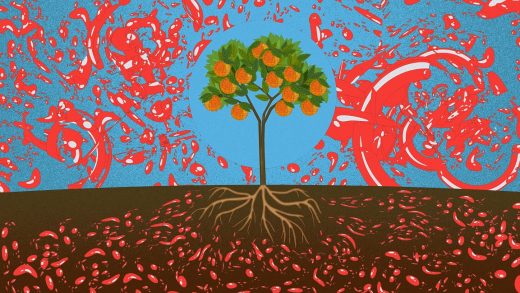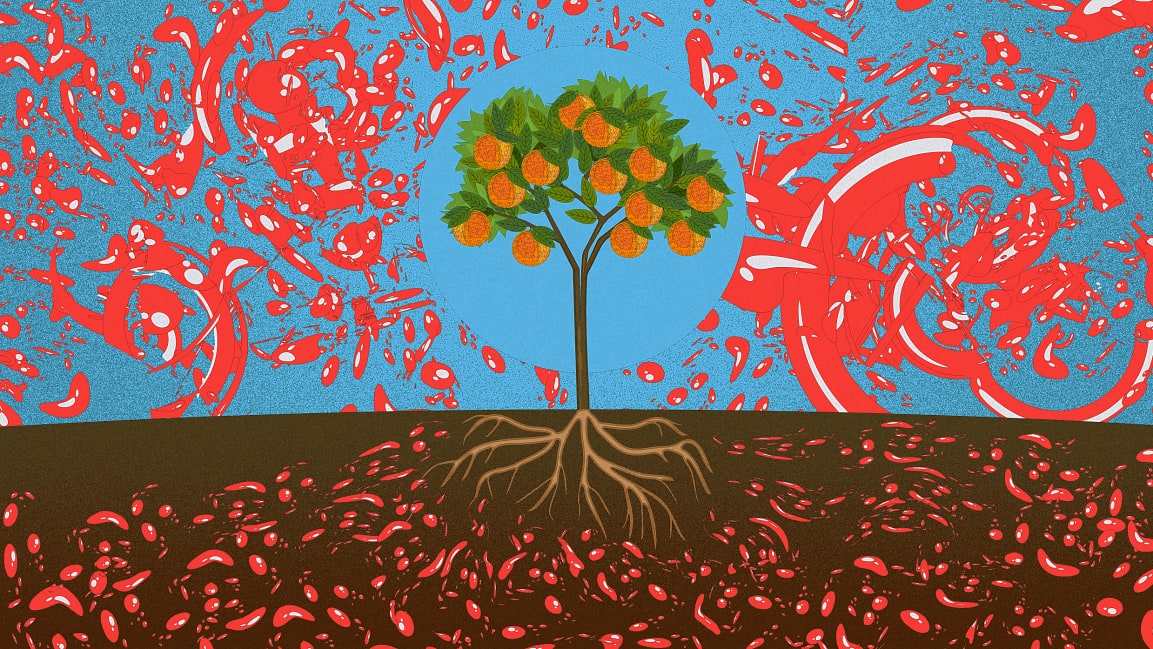Our fruits and veggies are sucking up microplastics through their roots
Microplastics—tiny pieces of plastic less than 5 millimeters in length—can now be found throughout the ocean and all over protected national parks. They’ve been found in our seafood, salt, and even beer. Now, new research has shown that microplastics can penetrate the roots of crops, traveling up the plant into the parts we eat.
Two peer-reviewed studies published today highlight the presence of microplastics in our food and call for more research into the relationship between plastic and our health. One from the University of Catania, in Italy, and published in Environmental Research found microplastics in produce from both supermarkets and local produce sellers in Catania. Researchers took samples of carrots, lettuce, broccoli, potatoes, apples, and pears, showing for the first time, they say, the presence of these tiny pieces of plastic in fruits and vegetables that we eat.
Another study published in Nature Sustainability from researchers at Yantai Institute of Coastal Zone Research, in China, and Leiden University, in the Netherlands, found that cracks in the roots of lettuce and wheat crops can take in microplastics from the surrounding soil and water. Those microplastics can then travel from the roots up to the edible parts of the crop. Though researchers already knew that very, very small particles—about 50 nanometers in size—could penetrate plant roots, Willie Peijnenburg, an environmental toxicology professor at Leiden University, says his study found that particles about 40 times that size can get into plants as well.
Peijnenburg’s study was done in a lab and looked at two different ways of growing plants: hydroponically in wastewater, and in sandy soil to which wastewater was added. Peijnenburg says they tried to simulate how many countries use wastewater to irrigate their crops, and that those larger microplastics could get in through the roots in part because they were flexible plastics.
“They are spherical particles with a size up to 2 micrometers and they are a little bit flexible, so they can themselves more or less be squeezed into the small pores’ cells of the plant roots,” he says. “Another mechanism is that inside newly developed roots there are small cracks present, and then the particles [go into] those cracks, so it’s even possible that bigger particles than the ones we studied might also be taken up by plants.” Aside from the possible health impacts, he hopes the presence of microplastics in our crops is something we simply don’t want from a sustainability point of view as well.
In the Italian study, the produce from local sellers was found to have higher levels of microplastics than the produce bought at supermarkets. The smallest pieces of plastic were found in carrots at about 1.5 micrometers, and the largest, found in lettuce, were 2.5 micrometers. Carrots were the most contaminated of the vegetables sampled, and for the fruits, apples were more contaminated with microplastics than pears. There were more microplastics found in the fruits than the vegetables, which researchers think has to do with how older fruit trees have a larger root system than vegetable plants.
We don’t yet know enough about how ingesting microplastics affects our health, but researchers of both studies say this presence of plastics in our crops is worrying, and more research on the health consequences is needed. Even if there aren’t harmful side effects to ingesting super-tiny pieces of plastic (though researchers note there may be long-term impacts, since plastic can contain harmful chemical additives), Peijnenburg adds that “simply, most people don’t like to be eating plastics.” Both studies have been shared with the Plastic Health Coalition ahead of an April 2021 summit in Amsterdam, organized by the Plastic Soup Foundation, that will look into the relationship between plastic and health.
(19)



